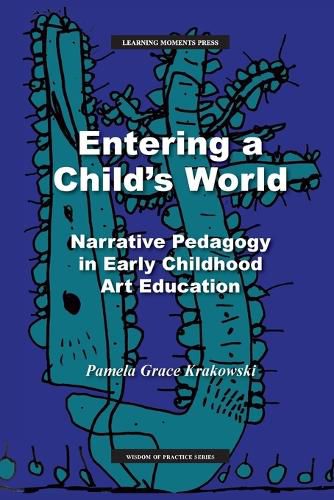Readings Newsletter
Become a Readings Member to make your shopping experience even easier.
Sign in or sign up for free!
You’re not far away from qualifying for FREE standard shipping within Australia
You’ve qualified for FREE standard shipping within Australia
The cart is loading…






This title is printed to order. This book may have been self-published. If so, we cannot guarantee the quality of the content. In the main most books will have gone through the editing process however some may not. We therefore suggest that you be aware of this before ordering this book. If in doubt check either the author or publisher’s details as we are unable to accept any returns unless they are faulty. Please contact us if you have any questions.
Drawing inspiration from the mobiles of artist Alexander Calder, Pamela Krakowski explores the challenges of balancing her normative and narrative pedagogical aims. As Dr. Krakowski recounts, "When I first began thinking about normative and narrative pedagogies, I bordered on presenting a false dichotomy between the two. Over time, however, I began to see a dynamic tension between them, because I value both the narrative and the normative. What my students have to say is important, and I have a body of knowledge, skills, and concepts that I believe are important for them to learn."
Throughout the book, Dr. Krakowski explores narrative sensibilities that allow her to listen to her students' thoughts, feelings, interests, and concerns. With curiosity, caring, and respect, she is able to enter the children's worlds of imagination and play, interweaving lessons of art and art-making into what matters most to her young students.
The book explores teaching art in both the classroom and museum setting and in a year-long collaboration with a science teacher.
,
$9.00 standard shipping within Australia
FREE standard shipping within Australia for orders over $100.00
Express & International shipping calculated at checkout
This title is printed to order. This book may have been self-published. If so, we cannot guarantee the quality of the content. In the main most books will have gone through the editing process however some may not. We therefore suggest that you be aware of this before ordering this book. If in doubt check either the author or publisher’s details as we are unable to accept any returns unless they are faulty. Please contact us if you have any questions.
Drawing inspiration from the mobiles of artist Alexander Calder, Pamela Krakowski explores the challenges of balancing her normative and narrative pedagogical aims. As Dr. Krakowski recounts, "When I first began thinking about normative and narrative pedagogies, I bordered on presenting a false dichotomy between the two. Over time, however, I began to see a dynamic tension between them, because I value both the narrative and the normative. What my students have to say is important, and I have a body of knowledge, skills, and concepts that I believe are important for them to learn."
Throughout the book, Dr. Krakowski explores narrative sensibilities that allow her to listen to her students' thoughts, feelings, interests, and concerns. With curiosity, caring, and respect, she is able to enter the children's worlds of imagination and play, interweaving lessons of art and art-making into what matters most to her young students.
The book explores teaching art in both the classroom and museum setting and in a year-long collaboration with a science teacher.
,